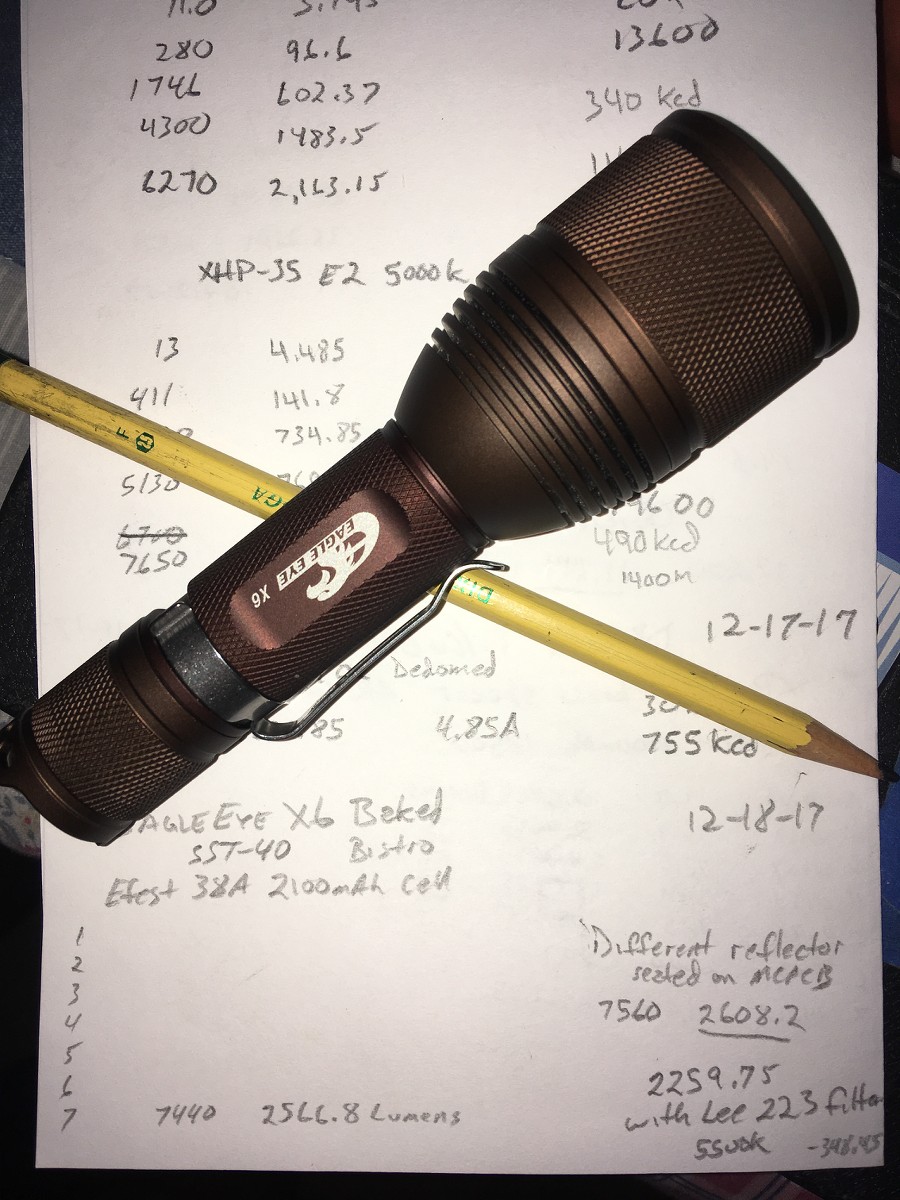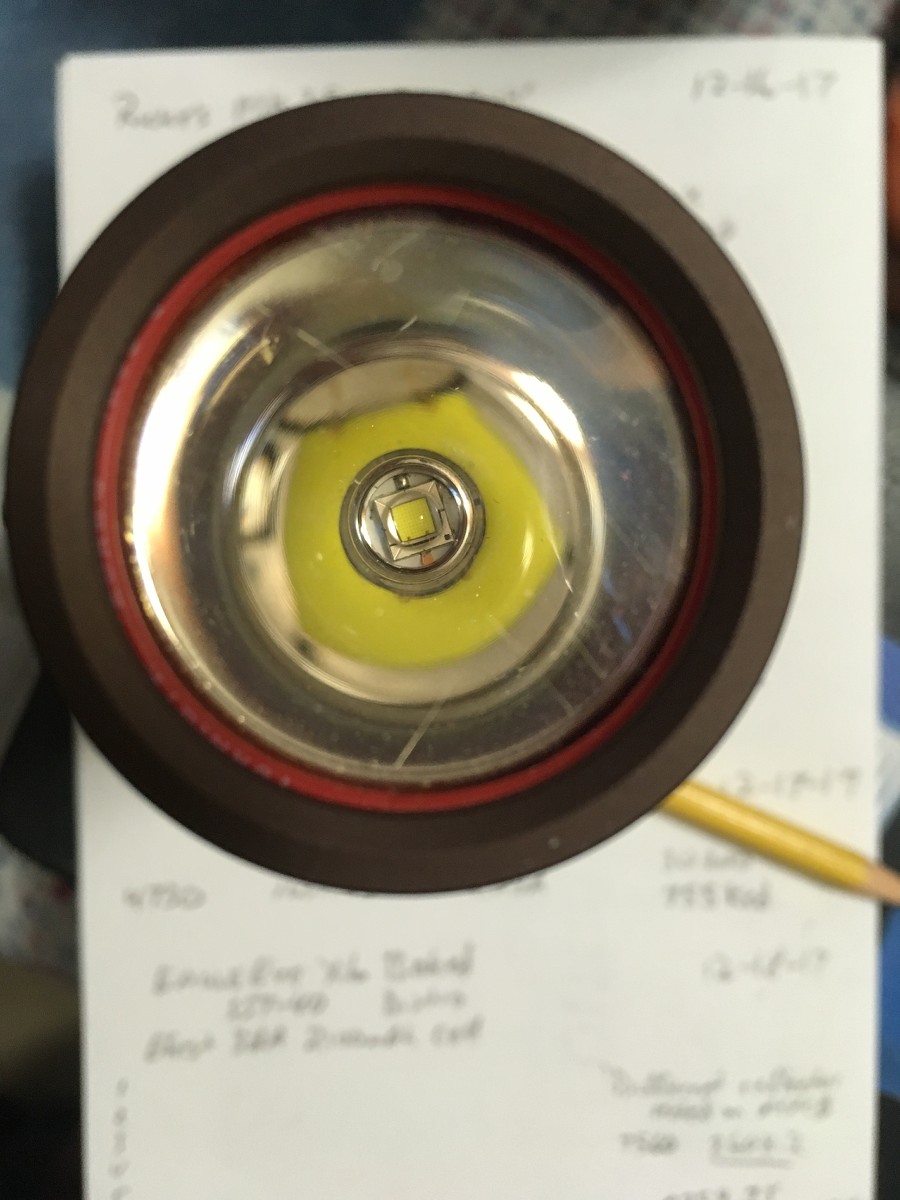Thanks for the info.
Heres djozz’s test on the SST-40.
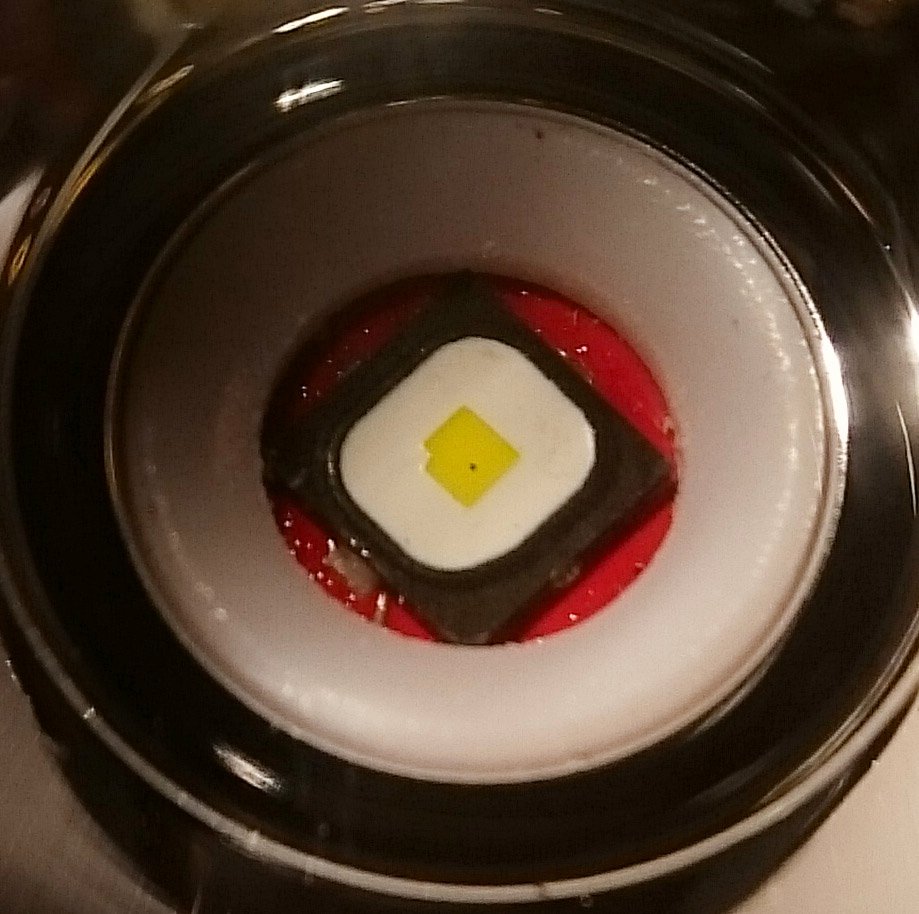
Today I modded a LuckySun D80 with a BLF-A6 driver and a Black Flat on led4power’s new, promising, Oslon board.
Unfortunately the modding attempt took all day and turned into an investigation of this new type of board, and this is what I found:
- to compare this new mod to, I have a driver-less (so led directly connected to battery, with only the switch in the circuitry) ‘Mitko-thrower’ with a Black Flat on a XP-DTP board, current is 4.5A and output is 700 lumen after 30 seconds, which is pretty consistent with my Black Flat emitter test.
- But this D80 mod, very neatly performed, did just under 500 lumen (at 4.2A, close enough), so there is 200 lumen missing somehow. The light was clearly more purple on the highest setting compared to the lower levels, a bit more purple than the (higher output) Mitko thrower.
- I thought maybe the driver is off, so I put a new BLF-A6 driver into the D80. Result: still a bit under 500 lumen.
- I reflowed a new (my last
 ) Black Flat on the board to see if it was the led that was wrong, result: still under 500 lumen.
) Black Flat on the board to see if it was the led that was wrong, result: still under 500 lumen.
- I suspected that my D80 has a really bad reflector, so I took a brand new Convoy C8 host with beautiful smooth reflector and transplanted driver and board+led into it. Result: 4.2A and just under 500 lumen.
- then I tried driver-less, connecting led-minus thoroughly to ground. Result: under 500 lumen.
- then as a last way out, I reflowed the led on a 20mm Noctigon and soldered it into the C8 (with the BLF-A6-driver, but with the DTP-board the driver is bypassed and led is directly connected to battery). Result: clear and present 620 lumen (and a small black speck on the led from all the transplants).
In all steps above I made sure that the led was perfectly centered and in focus, they were finished mods.
Conclusion: I can still think of other explanations, but for me the most plausible one at this moment is that this new type of board (at least the one that I did the test on), when heat-shedding really counts with a severely overdriven led that has the small Oslon footprint, performs not as good as a DTP board. I hope that I will be proven wrong by others as I really want that easy to use well-performing Black Flat board.
Black flats also do not come in flux bins they put them randomly in the tapes
likely this ones were on the low end of efficiency
Yeah, but reflowing another LED yielded the same result while switching MCPCBs brought an improvement. This is a strong indication that MCPCB was the reason for low performance.
That’s indeed a disheartening result.
Yeah you definitely want DTP if you want to get the most out of this LED.
Thermal paste is a must.
If you want to do 5-6A then you need a proper heatsink, not a flashlight host, to dissipate the heat.
Thanks Steve.
I suspect heat spreading on oslon black flat is pretty bad, bottom pads are very small so power density (W/mm2) is very high at board-pad junction, over 15Watts per 1mm2 of LED die.
This board was designed for IR oslons (black flat was still not very known at the time of design) , and it should perform much better than existing insulated boards like non-dtp copper pcb for XP, and Bergquist 804087 .
I will have two oslons flat for testing soon,after test I’ll do “autopsy”, I’m very interested in how cross section of oslon flat looks inside (thermal path specifically). Plastic case of oslons always was downside for me, I assume there is no ceramic like alumina inside, just copper pad, the question is how thick.
I did some calculation, mosx have thermal resistance equivalent to <250um of solder layer, and if I remember correctly someone did the test noctigon vs. sinkpad 2 (gap on top) ,and there were no visible difference in performance for xm-l2 and similar leds, but they have ceramic substrate and pads have decent size.
that was me, and the led was a XM-L2, so a way bigger thermal pad (13.3 mm2 vs 2.7 mm2 for the Black Flat, 5 times bigger)
It was actually this test/thread:
but I see there is identical picture in your thread also. Somehow either I missed your thread or forgot about it. Subscribed![]()
Yes, the observation is the same: with the XM-L footprint, the thickness of a solder layer under the led is not critical as long as you get rid of the thick dielectric layer. But apparently at the same powerlevel but a 5 times smaller footprint, the details of what happens under the led are more critical, makes sense ![]()
I ordered some MosX oslon boards for testing too , and i already have some Oslon black flat leds (LUW HWQP) here …
Right now i tested one at a Thorfire C8S on a DTP board (without a driver) , with AR glass and i get otf 720 lumens & (only) 170kcd @ 5 amps , using sony VTC5 .
720 lumen (@30seconds?) sounds really consistent with my Supwildfire driver-less thrower (350kcd ![]()
![]() ) which is 700 lumen but does not have and AR lens.
) which is 700 lumen but does not have and AR lens.
Yes , about 25 seconds after turn on .
Focus seems good , now i use a 0.3-0.5mm centering ring , i don’t think i can get a better focus for better results …
Stuck one of the Luminus SST-40 emitters on a 20mm SinkPAD and put it in a baked Eagle Eye X6 with a Bistro driver. On a 38A 2100mAh Efest it makes 2601 lumens out the front. I don’t really care for the blue tint side of things so I cut a piece of 223 Lee Filter and put it on top of the AR coated UCLp lens. Now I have a 5500K tint but with a 14% loss to around 2200 lumens. Looks good though, nice spot with an aura and then a useable spill.
Nice, they state these are 97% throughput but even after adding the lee filter it’s still at 86% so it’s worth it. You won’t get 2200 lumens out of a similar tint XM-L2.
That’s what finally dawned on me, reducing a 1A to a 3C is going to cost lumens output in a similar fashion anyway, and the SST-40 has a higher launch to begin with so it’s still a win.
This is what they call one eighth O.T.C. (Orange Temperature Color) and has an 85.2% transmittance with 7% absorption rate. You can see on the bottom right corner where I wrote down the lumens before and after, seems it was pretty spot on. ![]()
I simply looked at a color wheel and chose the opposite of the daylight white blue-white color I was seeing in the output, which is a light orange. Then went through the Lee filters to find the correct shade of orange and it works great. So far, anyway. I’ve melted more than a few of these pieces of film and this one doesn’t seem to have a fire retardant counterpart.
Very cool, let us know if it melts, but if it doesn’t it’s a good solution for sure. I’ve used a similar film when making lanterns from scratch before. I’ve also used one with diffusion to take the doughnut hole out of the XHP series.
Did the last days a couple of driver designs
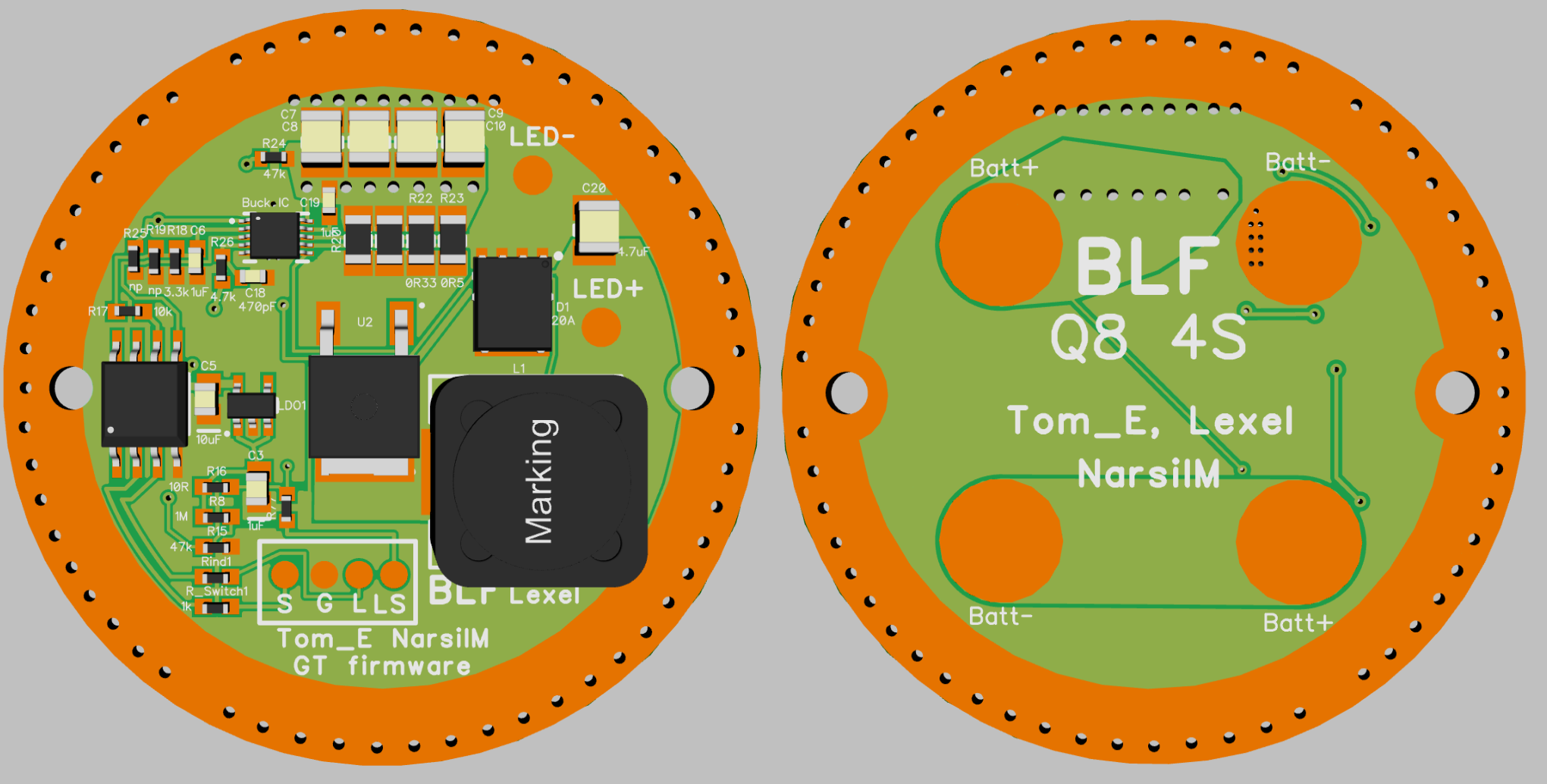
Q8 2S/4S Buck driver
6/12V LED 2.5-5A standard parts
6-8A with upgraded parts
Astrolux MF02 same specs as Q8
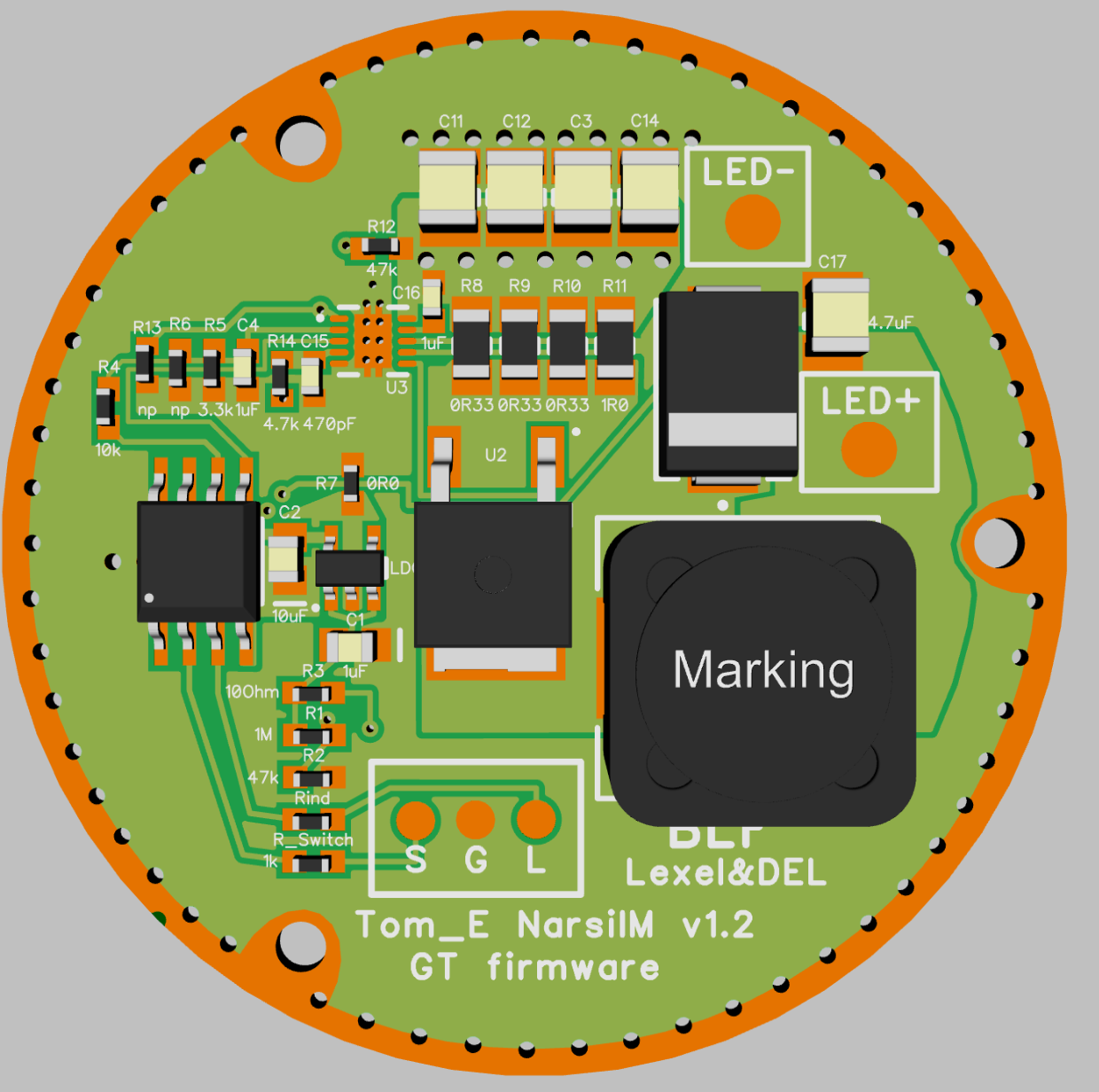
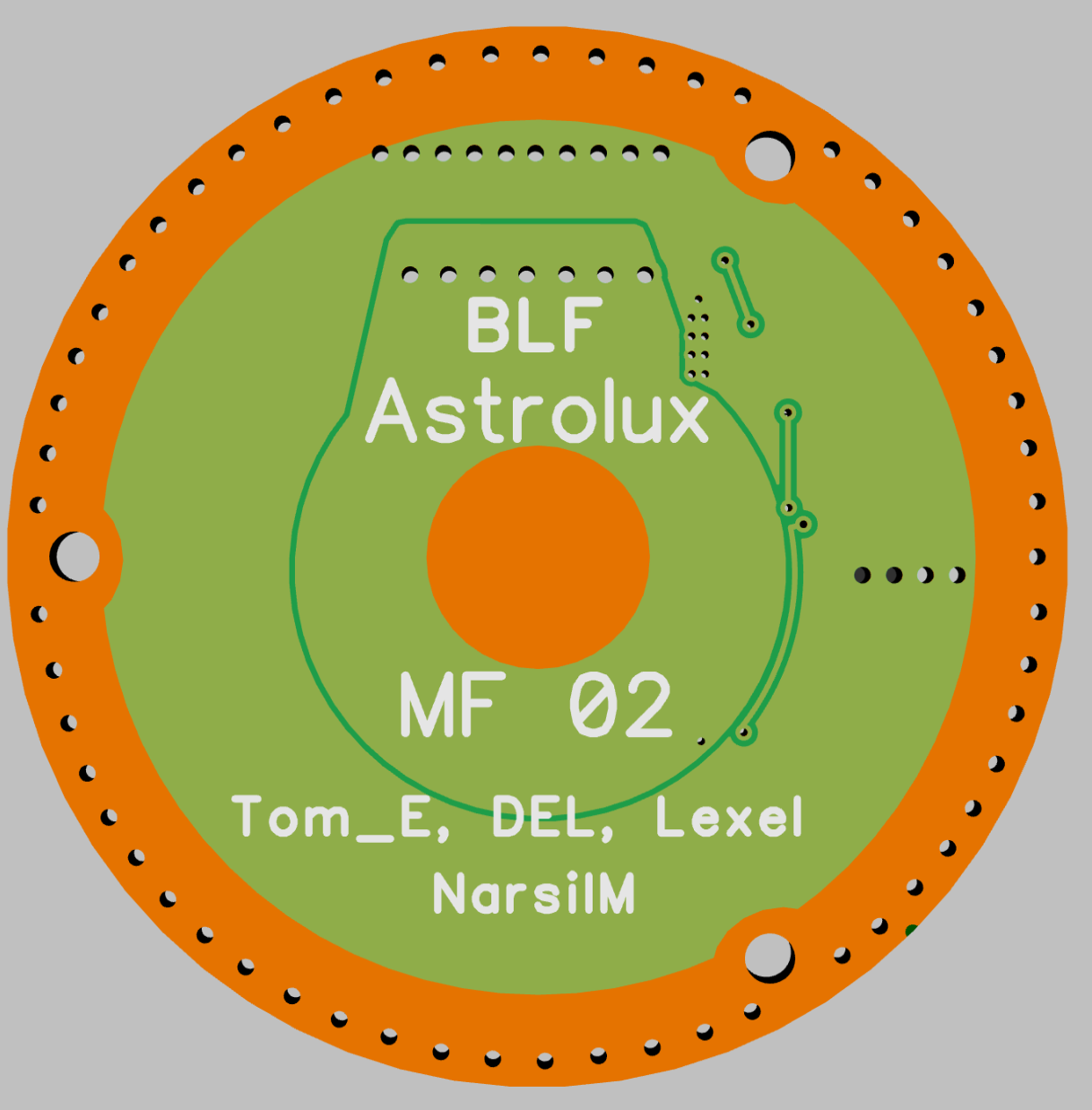
TN42 driver same specs as Q8 and MF02
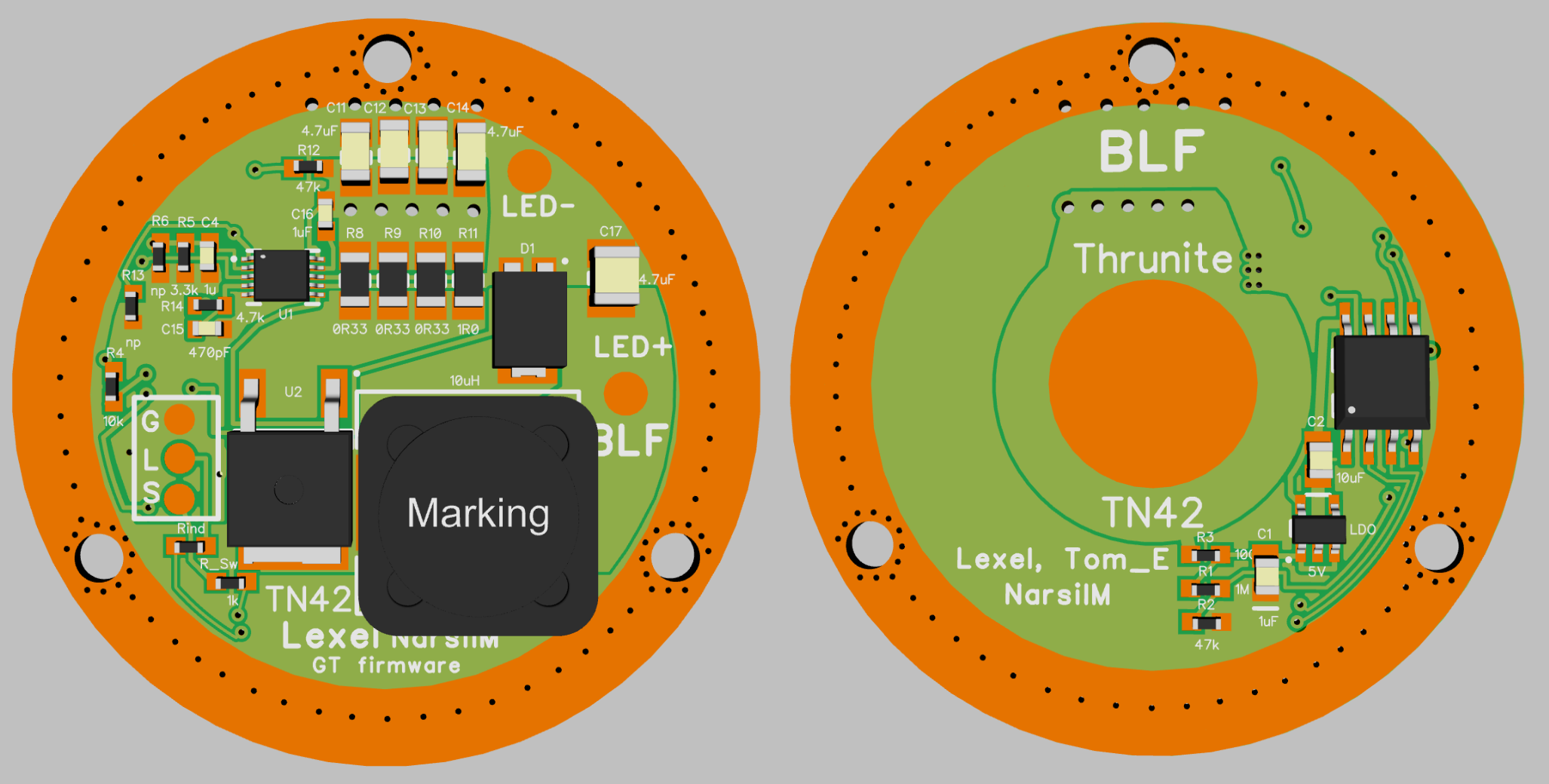
Oslon Black flat
DTP friendly P channel MOSFET driver
17mm and bigger
did 17mm Oshpark
and 17-24mm Seeed design

Nice work Lexel :+1: :heart_eyes:
